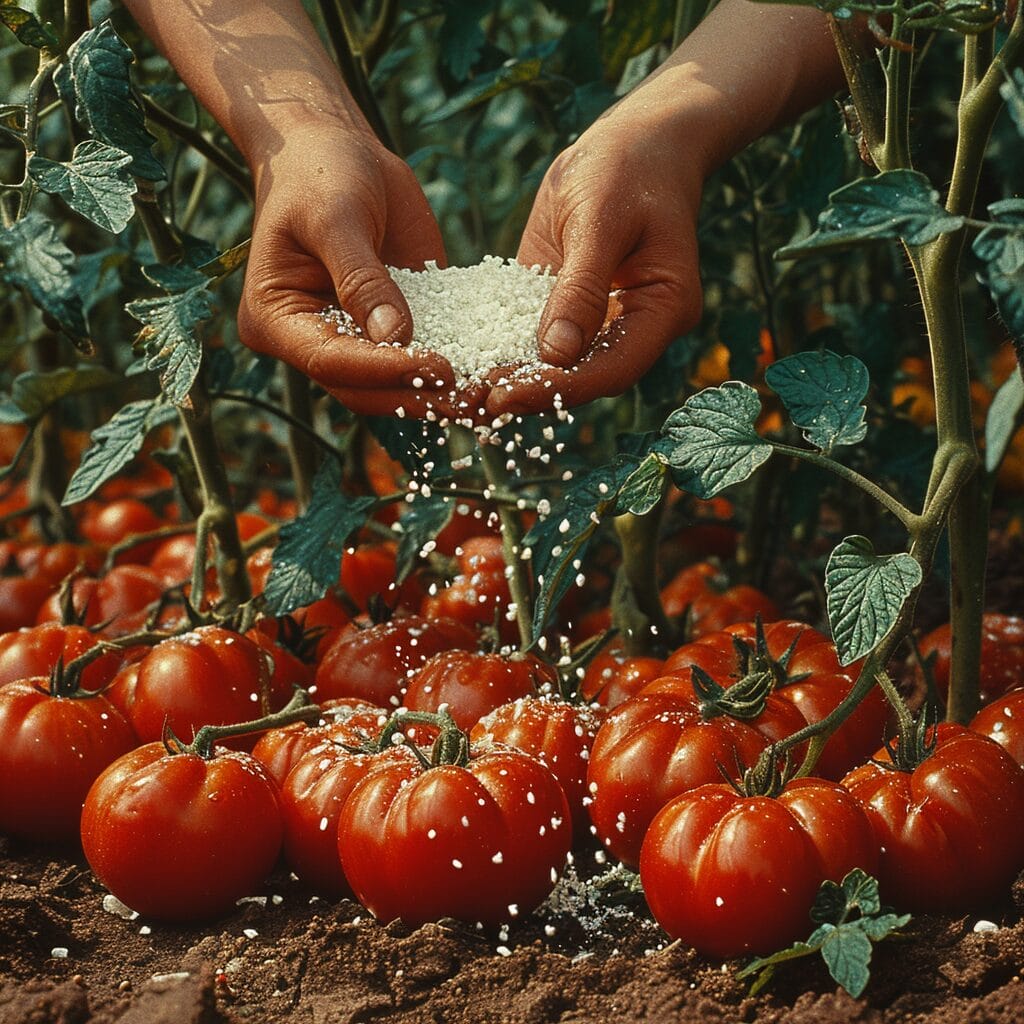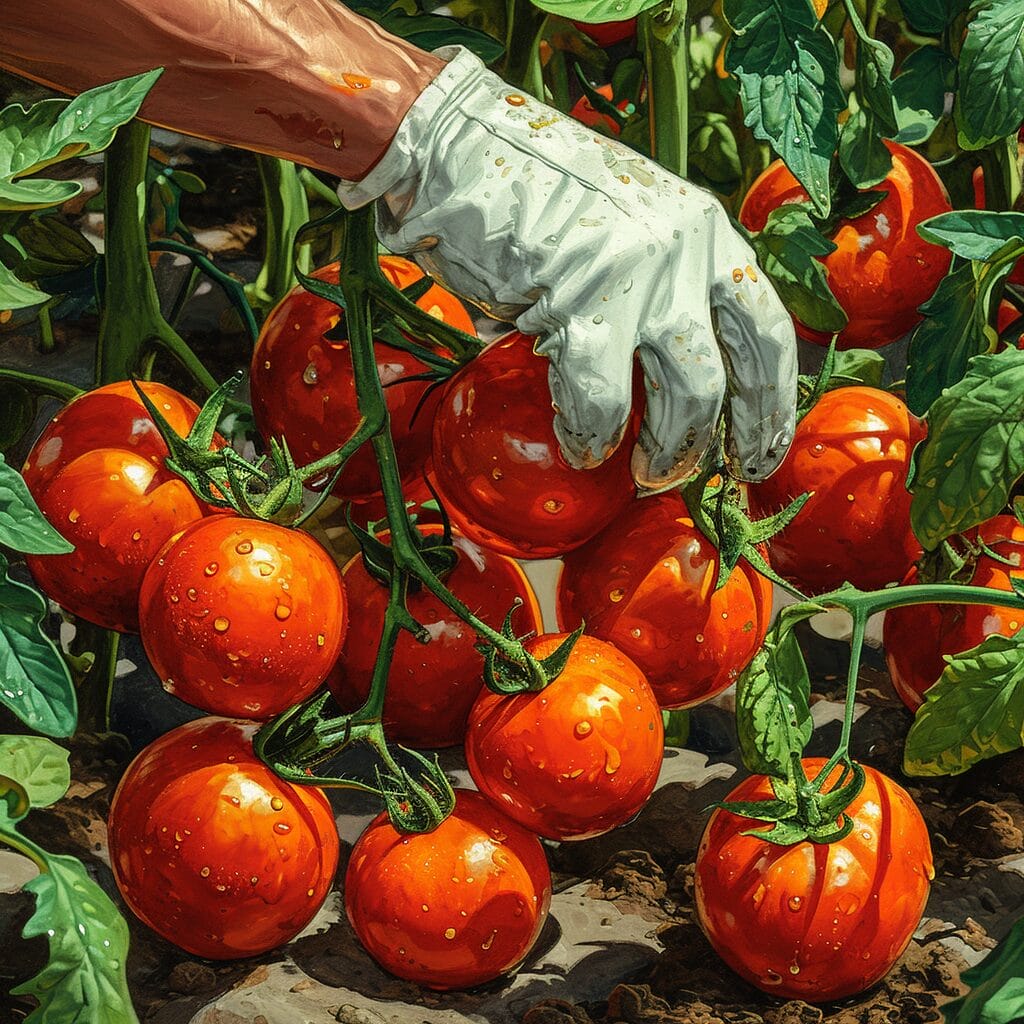How to Add Calcium to Tomato Plants | Blossom-End Rot Resistant Growing in 2024
Approximately 98% of the weight of a tomato plant originates from the water and nutrients it absorbs from the soil, emphasizing the importance of appropriate nutrient intake for optimal growth. As enthusiasts of gardening, we must pay careful attention to the calcium requirements of our tomato plants to avoid the emergence of blossom-end rot.
This guide will show you on how to add calcium to tomato plants using effective and sustainable strategies.
From understanding the significance of soil pH to selecting the proper calcium-rich amendments, we will uncover various methods to ensure your tomatoes receive the nutrients they require.
By the end of this journey, you’ll learn how to cultivate tomatoes that are not only resistant to blossom-end rot but also brimming with flavor and vitality.
Key Takeaways
- Calcium is essential for the health and structural integrity of tomato plants, and a deficiency can lead to problems like blossom-end rot.
- Soil testing is crucial to determine the existing calcium levels and whether additional calcium needs to be added.
- Natural sources of calcium, such as crushed eggshells, green manure crops, and well-aged compost, can be added to the soil to provide calcium.
- Calcium fertilizers and amendments, such as calcium nitrate and gypsum, can be used to combat calcium deficiency, but proper timing and dosages are important to prevent nutrient imbalances.
The Importance of Calcium for Tomato Plants’ Health

Calcium is critical for the structural integrity and overall health of tomato plants. Its absence can lead to several growth issues, including the dreaded blossom-end rot, which presents as a small, water-soaked spot on the fruit that enlarges and darkens, becoming sunken and leathery. To avoid such problems, maintaining adequate calcium levels in the soil is paramount.
Efficient water management is also vital. Both overwatering and underwatering can impede a plant’s calcium absorption. We recommend mulching to help the soil retain moisture, particularly in dry conditions, and gentle cultivation to avoid root damage that can hinder nutrient uptake. Using nitrate forms of nitrogen fertilizers can prevent excessive leaf growth and facilitate the movement of calcium to the fruit.
Testing the Soil Around Tomato Plants for Calcium Levels

Before supplementing with calcium, conduct a soil test to determine existing calcium levels. A comprehensive soil analysis will not only reveal calcium content but also provide information on soil pH, which affects calcium availability.
Here’s a simplified interpretation of typical soil test results for calcium:
- Below 500 ppm: Add calcium
- 500 – 1000 ppm: Monitor the situation
- 1000 – 1500 ppm: Optimal for tomatoes
- Above 1500 ppm: Unlikely to need more
The ideal pH for tomatoes ranges from 6.0 to 6.8, maximizing nutrient availability. If pH adjustments are necessary, they should be made to improve calcium uptake.
Natural Sources of Calcium and Ways to Add Them to Garden Soil

Natural sources of calcium, such as eggshells, green manure crops, and compost, are excellent for long-term soil health. Here’s how to incorporate these into your soil:
- Eggshells: Crush and sprinkle around the base of your plants. They provide calcium carbonate, which releases calcium as it decomposes.
- Green Manure Crops: Plant crops like alfalfa or clover, then till them into the soil to add nutrients, including calcium.
- Compost: Introduce well-aged compost to enhance soil texture, nutrient content, and water retention.
- Calcium Sulfate (Gypsum): Mix into the soil for a quick source of calcium without affecting soil pH.
Consider using a foliar spray to address immediate calcium deficiencies, which allows for direct absorption through the leaves.
Using Calcium Fertilizers and Amendments to Combat Calcium Deficiency

Calcium fertilizers like calcium nitrate provide a quick-release form of calcium that plants can absorb rapidly. Apply it according to package instructions to avoid potential nutrient imbalances.
Foliar calcium sprays can be applied to the leaves for direct absorption, especially if soil issues impede calcium uptake. Gypsum is another amendment that adds calcium without altering soil pH.
Maintaining Proper Calcium Levels for Tomato Plants

To maintain optimal calcium levels:
- Test Soil Regularly: Monitor and amend calcium content as needed.
- Water Wisely: Maintain consistent soil moisture for effective nutrient uptake.
- Manage Soil pH: Adjust pH to ensure the availability of calcium.
- Complement with Nitrogen: Use calcium nitrate for nitrogen to avoid competition with calcium uptake.
Can Adding Calcium to Tomato Plants Help Prevent Blossom-End Rot and Blossom Drop?
Adding calcium to tomato plants can indeed help prevent blossom-end rot and blossom drop, as it improves cell wall strength. To identify tomato blossom drop, look for healthy flowers that fall off prematurely. Implementing proper identification strategies can help address the issue and improve overall plant health.
Conclusion
Our pursuit of perfect tomatoes has taught us the importance of calcium. By conducting regular soil tests, using natural amendments, and ensuring proper watering, we can nurture strong, healthy plants.
Let’s commit to enriching our soil with calcium and practicing smart gardening. Together, we can enjoy a bountiful and healthy harvest, free of blossom-end rot.
Here’s to growing not just any tomatoes, but perfect ones.
Frequently Asked Questions
How does a lack of calcium cause blossom-end rot?
A calcium deficiency in the plant can lead to blossom-end rot, as calcium is important for cell wall formation and fruit development.
What are some ways to add calcium to the soil?
You can add calcium to the soil by using calcium nitrate, calcium sulfate, calcium chloride, or by adding lime to the soil.
How to add calcium to tomato plants that is just enough?
Tomato plants require a significant amount of calcium for proper growth and fruit development. However, it is essential to maintain a balance as adding too much calcium can also have adverse effects.
What is a good source of calcium for tomato plants?
Calcium nitrate is an excellent source of calcium for tomato plants and can be used as a fertilizer to supplement the soil with the necessary calcium.
Can calcium be added to tomato plants through foliar spray?
Yes, calcium can be added to tomato plants through foliar spray, which involves spraying a calcium solution directly onto the leaves for uptake.







